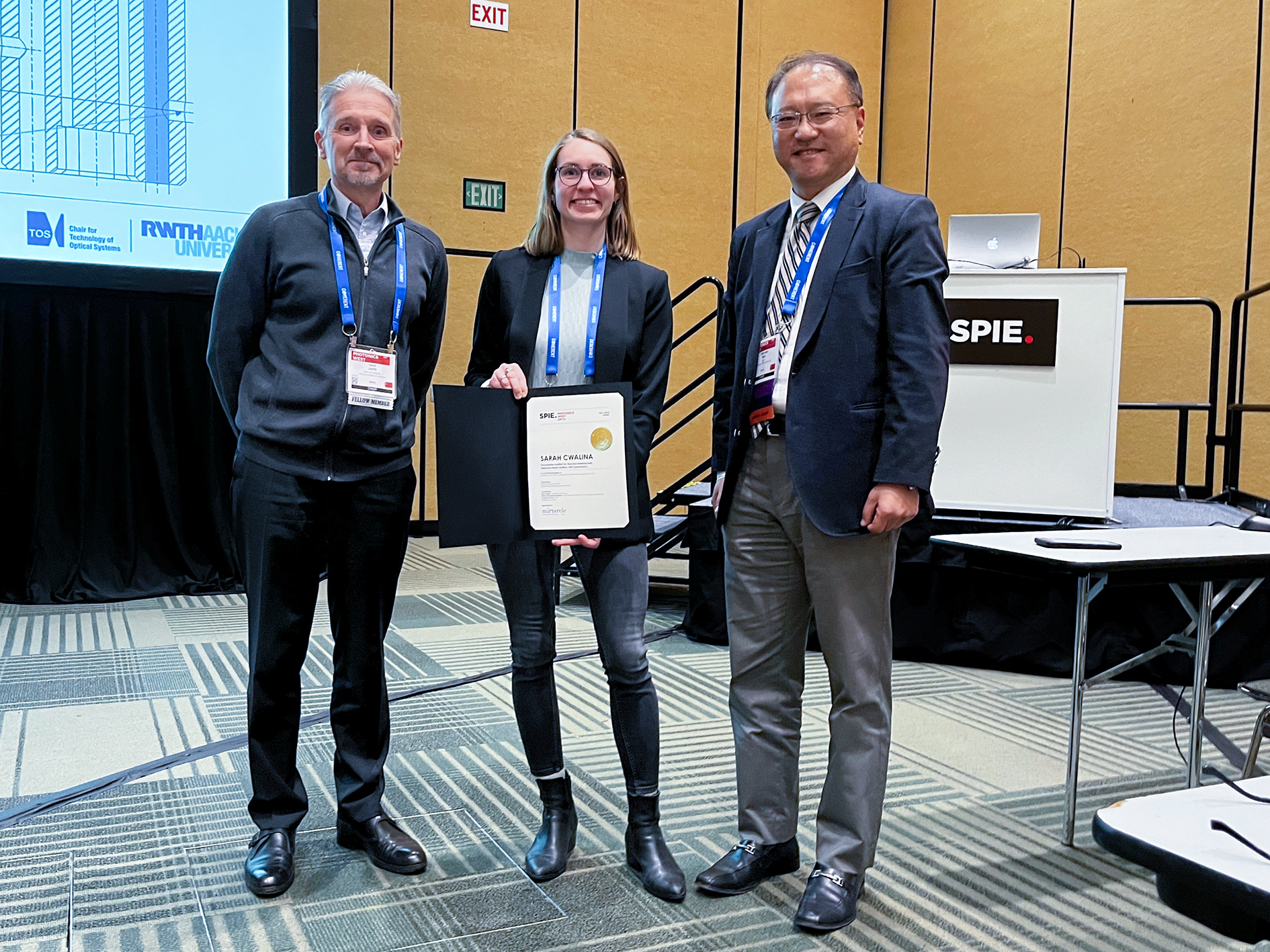Best Paper Award of the SPIE Photonics West conference 2023 given to researchers from Fraunhofer ISIT & Fraunhofer HHI
For their joint work "Coherent LiDAR with 2D quasi-static MEMS mirror scanning", scientists from the Fraunhofer Institute for Silicon Technology and the Fraunhofer Heinrich Hertz Institute received the "Best Paper Award" at the SPIE Photonics West 2023 conference in San Francisco. In addition to first author Sarah Cwalina from HHI, ISIT researchers Norman Laske and Dr. Shanshan Gu-Stoppel were also honored with the award.
LiDAR (Light Detection and Ranging) systems are used to generate a spatial image for e.g. driver assistance systems in road traffic or safety applications in industrial environments. For eye-safe operation, lasers are only allowed to emit very short pulses with limited intensity, which makes it difficult to detect the reflected light.
As an alternative to this, Fraunhofer HHI uses the FMCW (Frequency Modulated Continuous Wave) method: A modulated continuous wave laser emits light from an optical fibre via a scanning micromirror. The reflected coherent light wave finds its way back to the detector along the same path and generates a signal from which the distance travelled can be calculated. At the wavelength of 1550 nm used, most of the radiation is absorbed in the vitreous body of the eye and thus cannot harm the retina.
In order for the waves to overlap, the micromirror must be almost stationary for a short time at each point to be measured. By using quasi-static MEMS micromirrors from Fraunhofer ISIT, it was possible to generate a 3D point cloud with 24 x 24 positions in 104 ms (approx. 5500 positions per second). The experiments took place in the laboratory; at a distance of up to 7 metres, the measurement accuracy was less than 19 cm.
The work was funded internally by the Fraunhofer-Gesellschaft. MEMS scanners and FMCW LiDAR technology are considered promising candidates for 3D environment detection and object recognition.
 Fraunhofer Institute for Silicon Technology
Fraunhofer Institute for Silicon Technology
